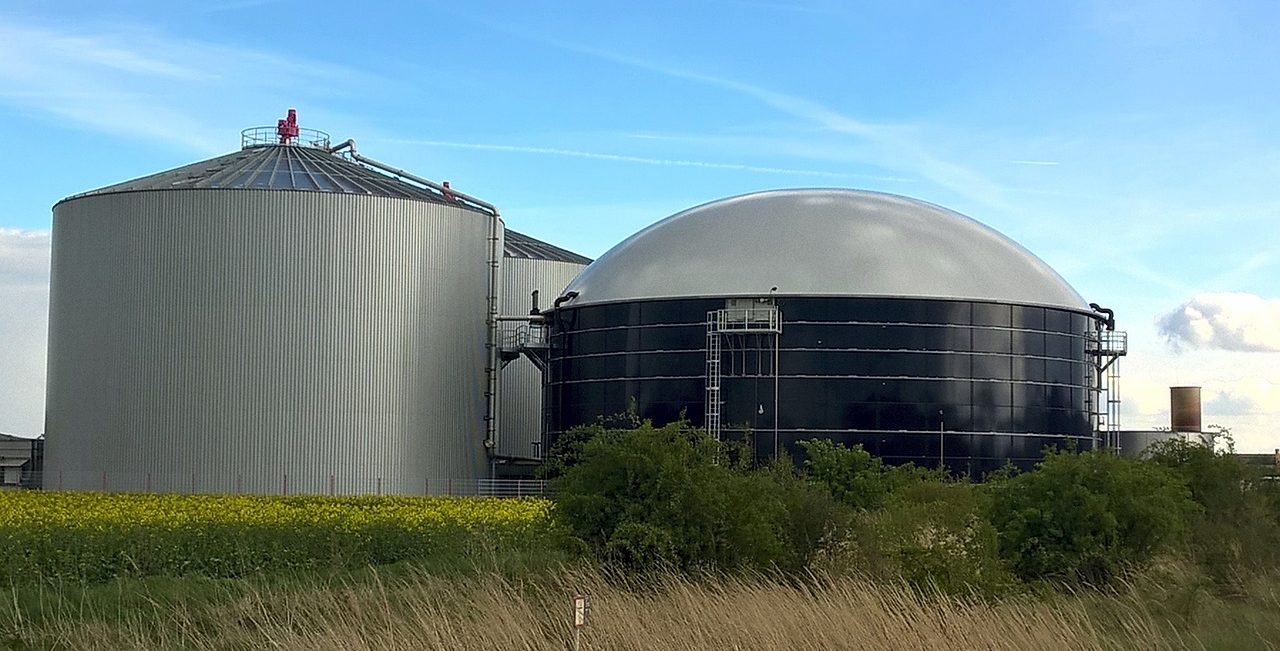
Biogas is a gas obtained by decomposing organic waste.
Biogas is the gas that is obtained from the decomposition of organic waste by anaerobia (that is, without oxygen). This process is developed by bacteria.
Biogas, therefore, is a fuel generated by the degradation of organic substances . The anaerobic decomposition performed by microorganisms allows biofuel to be produced with the treatment of biodegradable waste. The effluents of the process, on the other hand, serve as fertilizer .
Methane and carbon dioxide are the main constituents of biogas, which also has nitrogen , hydrogen and other elements. With biogas you can generate the energy that boilers, stoves, ovens and other devices use, and it is even possible to produce electricity through a generator.
Biogas and biodigesters
The system that performs a digestion of the bacteria found in the manure for the generation of biogas and fertilizer is called biodigester . In its simplest format, a biodigester is a container known as reactor , where organic substances that will ferment are stored. In the reactor, which is waterproof and closes airtight, waste from plants and animal droppings can be included so that, with anaerobic fermentation, biogas and fertilizer are generated.
The construction of a biodigester is very simple and economical. That is why in rural regions of Latin America, the development of these reactors is promoted to obtain biogas, whose combustion generates little smoke. Peasants, in this way, can produce their own energy at a reduced cost.

The process of obtaining biogas consists of several stages.
Production process
To produce biogas through anaerobic digestion of organic matter, it is necessary to carry out a process consisting of four well -defined stages, as indicated in biochemistry and microbiology experts that are dedicated to this activity. The procedure in detail is presented below:
- Hydrolysis : It is the first stage of biogas production, and demands that organic compounds cross the cell wall so that their organic matter can be exploited. It is possible to obtain soluble organic compounds from polymeric organic matter thanks to the action of hydrolytic microorganisms, which generate extracellular enzymes that have such capacity. The time that the whole process takes is largely determined by this stage, whose success is linked to the dimensions of the particles, the temperature, the biochemical composition of the substrate and the pH, among more factors.
- Acidogenesis : in this stage the conversion of soluble organic molecules into three types of compounds takes place. They are divided into those that cannot take advantage of methanogenic bacteria (such as fatty acids, aromatic compounds and ethanol), and those that can (where we find hydrogen, acetic and formic, as well as propionic, valeric and lactic). These compounds are also responsible for eliminating any trace of oxygen in the biodigester.
- Acetogenesis : any compound that has not been metabolized by methanogenic bacteria is used in this stage, and among them are aromatics, fatty acids and ethanol, which are transformed into others of less complexity, such as hydrogen and acetate . Homoacetogenics also stand out here, a very particular type of acetogenic microorganism that is capable of generating acetate and is used to keep the level of hydrogen gas low, since it does not produce it.
- Methanogenesis : to complete the anaerobic decomposition of the products, methanogenic bacteria come into action , which are responsible for producing methane. It is known that 70% of the methane produced in biodigesters arises when acetic acid loses the carboxyl group of atoms, since acetate can only be used by two types of bacteria.
